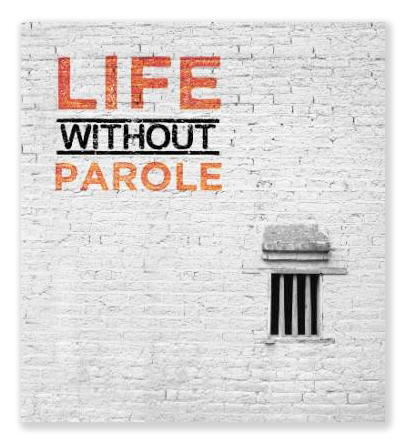We post news and comment on federal criminal justice issues, focused primarily on trial and post-conviction matters, legislative initiatives, and sentencing issues.

BIDEN MAY (FINALLY) BE TAKING BABY STEPS ON CLEMENCY
The New York Times reported last week that President Biden is considering using his clemency powers – which he has not exercised in his first seven months in office – to commute the sentences of nonviolent drug offenders with fewer than four years left to serve. The contemplated intervention would not apply to those now in home confinement with longer sentences left, or those who committed other types of crimes, Biden administration sources told the Times.
The notion of clemency for some inmates is just one of several ideas being examined in the executive branch and Congress, the Times said. Others include a broader use of 18 USC § 3582(c)(1)(A)(i) “compassionate release” or 34 USC § 60541, the elderly offender home detention program, or even a law – such as the Safer Detention Act (S.312) – to allow some inmates to stay in home confinement after the pandemic.
The CARES Act permits inmates who are sent to home confinement under Section 12003(b) to remain at home until the pandemic public health emergency ends. The Times says, “That will not be soon: With the Delta variant spurring a surge in cases, the public health emergency is not expected to end before next year at the earliest.”
 On August 10, Biden Press Secretary Jen Psaki said Biden was “exploring multiple avenues to provide relief to nonviolent drug offenders, including through the use of his clemency power.” The Times reported officials have confirmed that the Justice Department “will soon begin requesting clemency petitions for drug offenders who have less than four years left on their sentence, which will then be reviewed by its pardon office.” The officials said a focus on nonviolent drug offenders “dovetail[s] with Mr. Biden’s area of comfort on matters of criminal justice reform.”
On August 10, Biden Press Secretary Jen Psaki said Biden was “exploring multiple avenues to provide relief to nonviolent drug offenders, including through the use of his clemency power.” The Times reported officials have confirmed that the Justice Department “will soon begin requesting clemency petitions for drug offenders who have less than four years left on their sentence, which will then be reviewed by its pardon office.” The officials said a focus on nonviolent drug offenders “dovetail[s] with Mr. Biden’s area of comfort on matters of criminal justice reform.”
Whether Biden is leaning toward commuting the sentences of drug offenders to home confinement, reducing sentence length to bring them down to the normal window 10%-or-six-month window for 18 USC 3624(c)(2) end-of-sentence home confinement, or some mix of the two, is not yet clear.
The Times reported that DOJ is still studying options that could keep non-drug offenders from being forced back into prison.
Meanwhile, criminal justice reform groups are keeping up pressure on the President. FAMM and the American Civil Liberties Union are mounting a six-figure ad campaign to pressure Biden to keep the CARES Act prisoners at home. The TV ads feature Juan Rodriguez, a federal prisoner sent home in July after doing eight of 14 years for a drug conviction. “I’m going to try to make the best out of every day I have out here,” Mr. Rodriguez says in the ad featuring him with his family and working a new job. “President Biden, please don’t separate me from my family.”
 The ACLU has argued that fewer than 1% of prisoners put on home confinement had violated the terms of their release, and it was time for Biden to follow through on lowering the incarceration rate and size of the federal prison population that he campaigned on as a presidential candidate. So far, only five people sent home during the pandemic have been returned to prison for new criminal conduct.
The ACLU has argued that fewer than 1% of prisoners put on home confinement had violated the terms of their release, and it was time for Biden to follow through on lowering the incarceration rate and size of the federal prison population that he campaigned on as a presidential candidate. So far, only five people sent home during the pandemic have been returned to prison for new criminal conduct.
USA Today has reported that over two dozen small business owners who have CARES Act home confinees are also asking Biden to grant clemency to prisoners. Some say losing employees to prison during a national labor shortage would not only be detrimental to their businesses, but would also keep their companies from growing.
Ohio State law professor Doug Berman complained in his Sentencing Law and Policy blog that when Biden was campaigning, he promised to “’take bold action to reduce our prison population’. But the federal prison population… has grown by over 4000 persons according to BOP numbers, from 151,646 total inmates on January 21, 2021, to 155,730 total inmates on August 26, 2021. To date, I cannot really think of any actions (let alone bold ones) that Prez Biden has taken to reduce the federal prison population. Talk of some clemency action is heartening, but just a start. And whatever clemency efforts are made, they should extend beyond just a limited group who are already home.”
The New York Times, White House Weighs Clemency to Keep Some Drug Offenders Confined at Home (August 30, 2021)
Washington Times, ACLU pressures Biden to keep convicts on home confinement out of prison due to pandemic (August 27, 2021)
USA Today, Businesses that hired inmates who were allowed to serve time at home during COVID push for clemency (August 26, 2021)
CBS News, Inmates on home confinement could be sent back to prison after the pandemic: “Why make us go back and do it again?” (September 3, 2021)
Sentencing Law and Policy, Prez Biden reportedly considering, for home confinement cohort, clemency only for “nonviolent drug offenders with less than four years” left on sentence (August 30, 2021)
– Thomas L. Root










 The closure was described as being temporary, reminiscent of
The closure was described as being temporary, reminiscent of 













